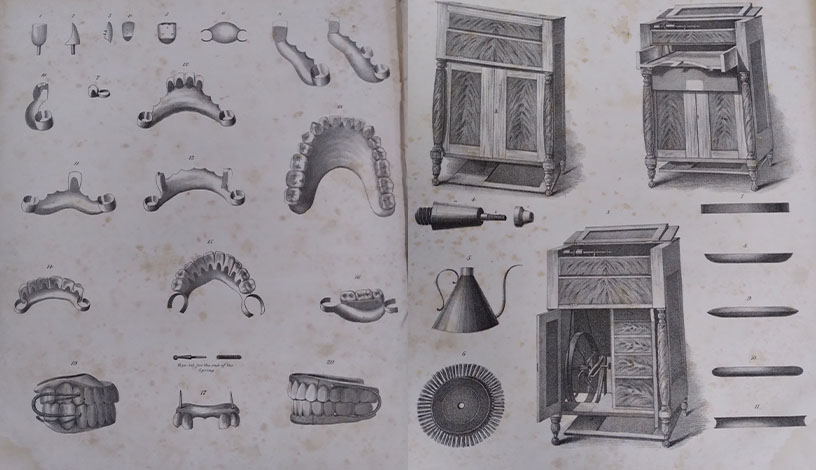To truly appreciate the advancements in the health sciences, one must study its history. There are several opportunities at UNMC to learn about the history of dentistry and dental education through artifacts, rare books and photographs.
Dental education in Nebraska has been around for more than a century. The Lincoln Dental College opened in 1899 and solidified a relationship with the University of Nebraska in 1918, officially becoming the University of Nebraska School of Dentistry. One year later their name changed to the College of Dentistry.
In 1967, the college moved into a new building on the university’s East Campus in Lincoln. The College of Dentistry administratively joined UNMC in July 1979 while remaining in Lincoln.
Starting in 1977, a dental museum was made available once a year in Lincoln, exhibiting dental artifacts representing the profession from the 1850s to the present. The collection contains thousands of artifacts that recreate the dental offices of five different periods, from the 1850s to the 1930s, and dental laboratories from the 1890s to 1900s.
Stanton D. Harn, PhD, professor of anatomy in the UNMC Department of Oral Biology, has been the curator of the collection since 1977. The new Stanton D. Harn, PhD, Dental Gallery on Level 4 of the Wigton Heritage Center incorporates a small part of the collection, exhibiting a dental office from the period of 1870 to the 1880s. To learn more about dentistry at UNMC, visit the exhibit online.
The Leon S. McGoogan Health Sciences Library Special Collections and Archives department houses the rare book collection. One of the most recent additions to the collection is a book that contributes to the history of dentistry. “The Anatomy, Physiology and Pathology of the Human Teeth; with the Most Approved Methods of Treatment; Including Operation” by Paul B. Goddard, MD, is a first edition published in 1844. Dr. Goddard was a demonstrator and lecturer in anatomy at the University of Pennsylvania. He created the book with Joseph E. Parker, a dentist.
The book covers more than just the anatomy of teeth. Goddard shares information on filling cavities, taking impressions using yellow beeswax, dental hygiene and recipes for tooth cleaning substances. One recommendation in the book was to avoid the use of hippopotamus tusk as an alternative to porcelain dentures. It looks similar to human teeth but will quickly yellow and lose stability.
Dr. Goodard’s book contains outstanding medical illustrations. Lithographs drawn by artist W.E. Smith represent the anatomy of the teeth, techniques for using tooth keys and various instruments, such as forceps and elevators. The lithographs also include items needed by every well-equipped dental office, such as chairs, cabinet lathes, a grinding apparatus with a workbench, molds for various teeth and a muffle furnace. To view Dr. Goddard’s dental book, email Erin Torell, rare book librarian.
